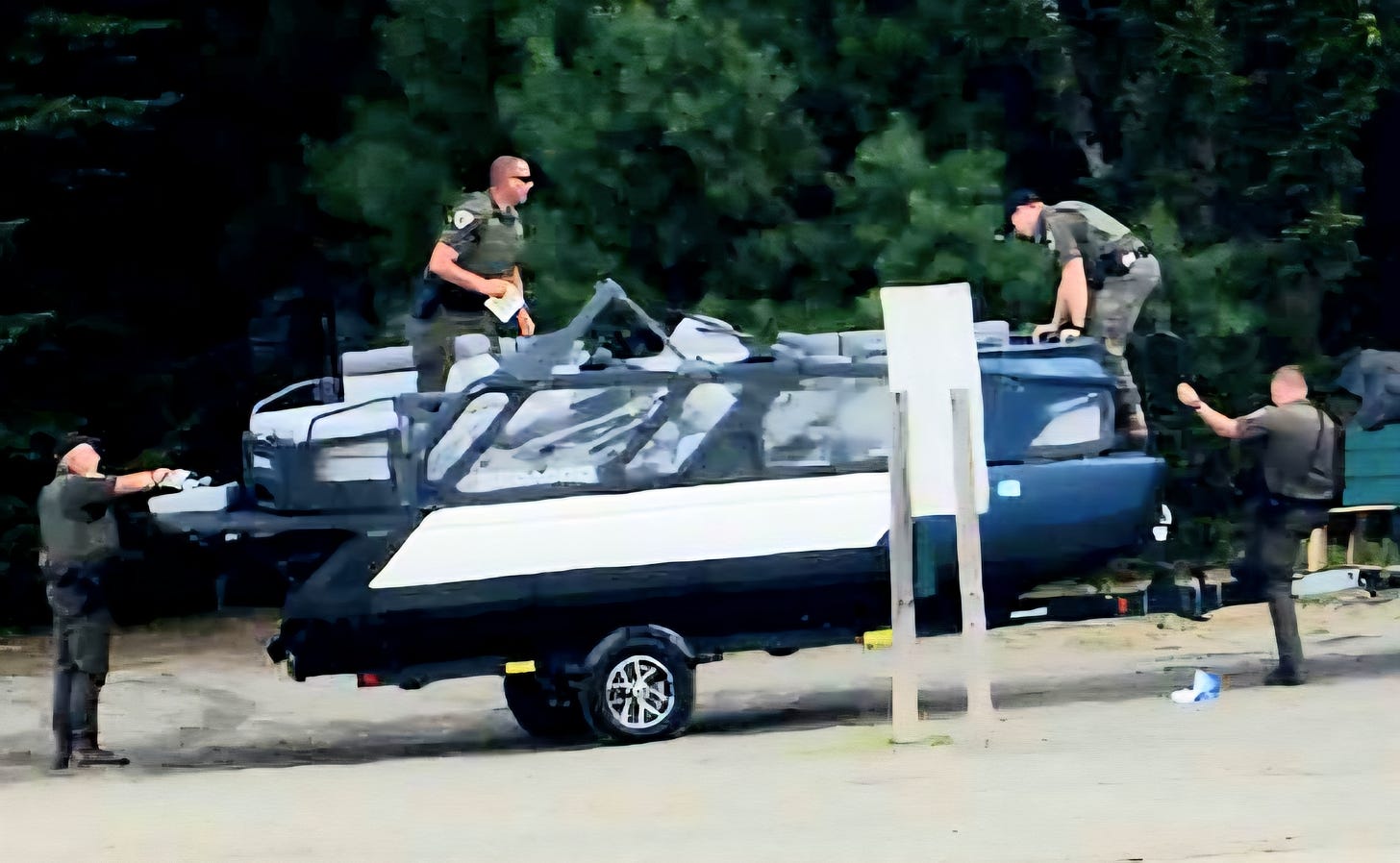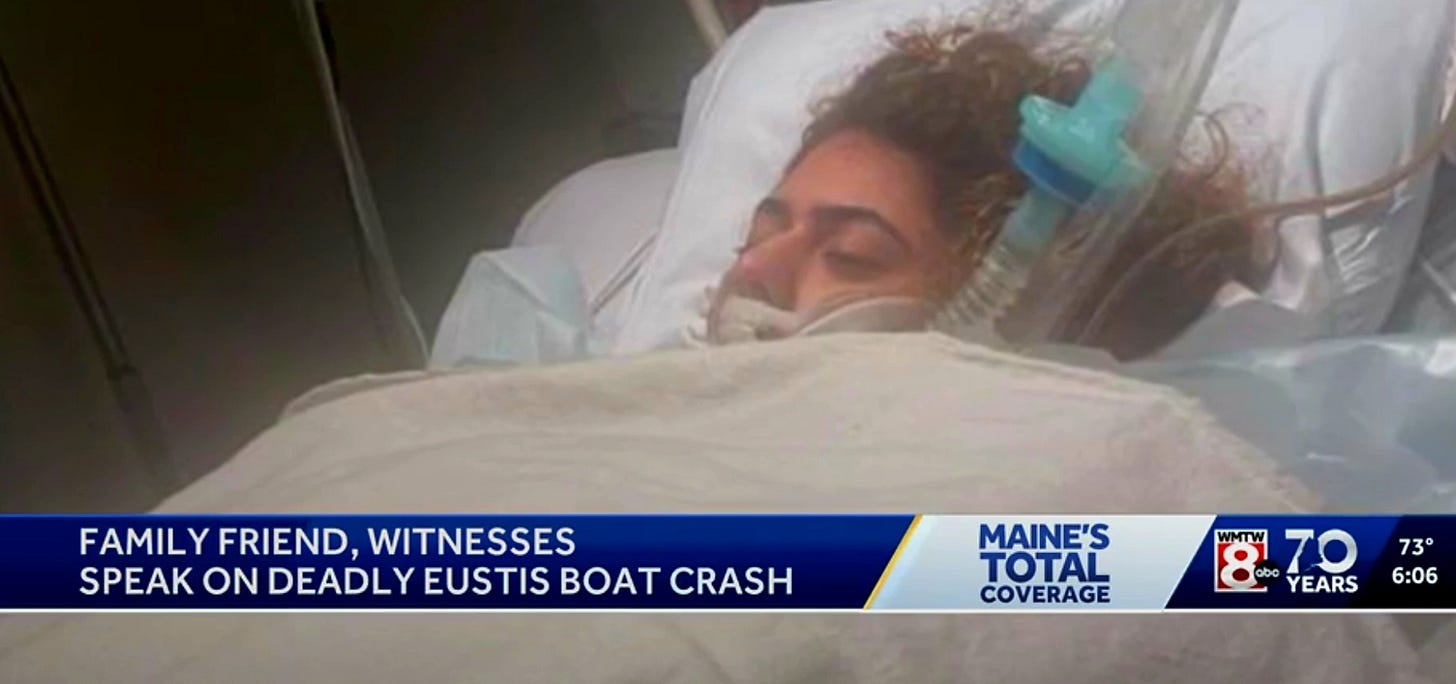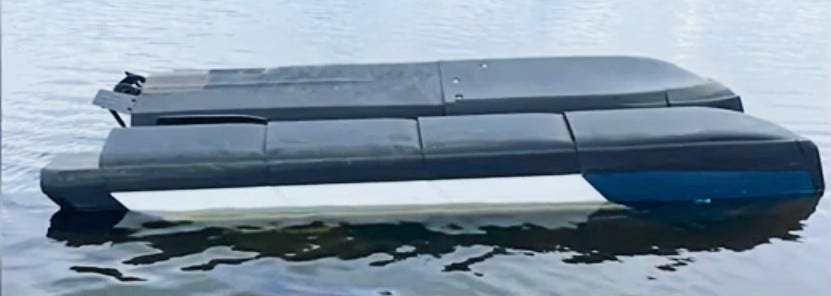A Lot Like the St. Johns River Accident, This Jetski-Pontoon Flipped in Maine, Killing Three
Trapped Under the Overturned Sea-Doo Switch, Just Like the Clay Toddler

Three women riding on a Sea-Doo Switch died recently after the jetski-pontoon boat flipped over forward on a lake in Maine. The August 30 accident appears to have happened much the same way a smaller model flipped on the St. Johns River a year ago, nearly killing a Clay County toddler.
Here’s how Maine’s Inland Fisheries & Wildlife Department, which is investigating the 2025 accident, described events:
The boat was traveling towards Flagstaff Lake, and when they were in front of the beach area of the Cathedral Pines Campground, the bow of their pontoon boat started to go under. The driver, John Morris, age 50 of Eustis, attempted to raise the bow, but it continued to go under and the boat flipped, throwing all seven passengers into the water approximately 180 feet from shore.
According to an employee at the Eustis campground, campers rushed out to save passengers who had become trapped underneath the overturned Switch—as was the case in St. Johns accident and another in Virginia.
John Morris, who can be described as an outdoorsman, did not respond to a text message. According to Inland Fisheries & Wildlife, alcohol is not believed to be a factor in the accident.

Two of the passengers were pronounced dead at the scene—Farhana Nasir, 53, of Selden, New York and Kiran Akbar, 23, of Lake Grove, New York. The third victim, Noor Nasir, 22, also of New York was airlifted to Northern Light Eastern Maine Medical Center in Bangor, where she died early on September 3.
CPR had been performed on all three at the scene, but they were not responsive, according to Inland Fisheries & Wildlife.
Latti would not say how Morris “attempted to raise the bow” once it began to go underwater, nor would he confirm whether the vessel was going slowly or decelerating, as was the case in 2024 Switch accidents in Virginia and Florida. He did say weather and lake conditions were not believed to be a factor.
However, Morris may indeed have been decelerating or driving slowly given that he was passing in front of the Cathedral Pines Campground swimming area, and the boat was within Maine’s standing no-wake zone, which extends 200 feet from shore.
The Virginia accident took the life of a nine-year-old girl on Fourth of July, 2024 when the family’s 13-foot Switch overturned. Then, on August 25, 2024, another 13-footer did a forward flip at the confluence of the St. Johns River and Black Creek. Vianca Grullon, 15 months, nearly drowned and was left with a lifelong “catastrophic anoxic brain injury.”
The Inland Fisheries & Wildlife news release answered a standard question raised by any boating accident: Were the people on board wearing lifejackets? In the Maine case, the answer was no. But it is worth noting that in both the Virginia and Florida accidents, the girls were wearing lifejackets, and that fact actually proved detrimental. Both were pinned to the floor of the overturned Switch by their buoyancy, making rescue more difficult and time consuming.
The Virginia family appears to have reached an out-of-court settlement with Switch manufacturer BRP. The Grullon family has filed a $30 million lawsuit against BRP, which is winding its way through Circuit Court in Jacksonville, Florida.
Grullon lawyer Judd Rosen reacted to the Maine fatalities, comparing the Switch to a subcompact 1970s car with a reputation for catching fire and exploding due to the positioning of its gas tank. “They have a lot of explaining to do. So very sad for these families. This thing (the Switch) is like the Ford Pinto,” attorney Judd Rosen said.
Writing in the Grullon lawsuit against BRP, Rosen blamed water intrusion in the outer pontoons for Switch nosedives when decelerating:
Specifically, the defect in the subject Sea-Doo Switch was that it was designed in a manner where the vessel became unstable due to water shifting inside the pontoons during normal operation or changes of speed, water becoming trapped inside the pontoons such that it changed the buoyancy of the subject vessel, water becoming trapped inside the pontoons changing the center of gravity and stability of the vessel, an unstable design of the subject vessel such that it would lose buoyancy and become unstable during normal operation or changes in speed, defective and/or missing baffles inside the pontoons such that the vessel would become unstable as a result of foreseeable water intrusion.
In February, BRP announced a safety recall of all Switch models. “Improper distribution of passengers and cargo weight could overload the front of the watercraft and cause instability, nosediving and possibly lead to capsizing,” Sea-Doo said in the recall notice. “The condition worsens if water evacuation from the hull is not optimal. This could cause serious injuries or even death.”
The recall involved affixing a label warning against overloading the bow, and, according to owners on Facebook, the application of caulking on the outer hulls. BRP has also issued a new training video and updated the Switch manual, urging owners to review both. At one point, the manual warned owners not to try powering out of a nosedive, saying that accelerating would tend to plunge the bow down further.
The Switch in the Eustis accident was purchased in 2024 before the recall. Latti said investigators would determine whether it had undergone the recall work.
Latti also said his department’s investigators would not limit their inquiry to questions of human culpability but would report on whether they believed design factors contributed to the accident.
“There will be a very thorough investigation, and then we’ll do what we always do and sit down with the district attorney and determine any charges,” Latti said.




These accidents happen. Rare though. What is not rare is the number of men (usually men) killed sadly on motorcycle crashes. One just last night in JAX. A 50 year old man. Diving into this issue would make more sense for our area. Sad how many peope are killed on motorcycles. Often, it is their fault too.